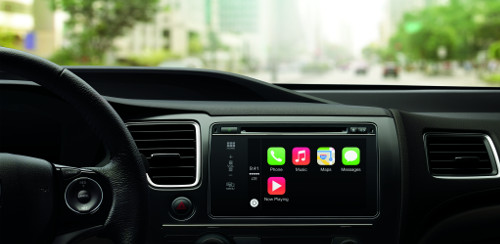
1. In-vehicle connectivity will increase from 10% to 90% by 2020.
This will be a mixture of 2G, 3G, and 4G cellular technology, according to Pavan Mathew, head of connected vehicles at Telefonica.
He told CBR: "The hardware manufacturers determine what level of activity is going to be executed into the vehicle. Today, most of them are still on the 2G or 3G network. But with Audio recently announcing 4G, we’re seeing a gradual increase to 4G."
Henry Bzeih, head of telematics and infotainment at Kia Motors, predicts complications between OEMs and telcos in terms of providing mobile connectivity to the customers.
He said: "This is the largest barrier to the widespread adoption of the connected car currently. For example, we’re currently talking about vehicles with 4G LTE but at what cost and with which carrier? Who does the customer have a contract with? It is great that connected vehicles will be able to stream enormous quantities of data, but at what price point, and who pays?"
2. Demand will be driven by safety and diagnostics apps
Telefonica’s study of more than 5,000 drivers found that 73% chose safety- and security-related services as the connected car features they would be most interested in. These would include smarter navigation, fault diagnostics and geofencing to track the whereabouts of drivers.
"Consumers are telling us that the type of services that reduce anxiety and address safety and security are the services I’m willing to pay for," said Mathew.
He added that drivers were less interested in infotainment and media apps.
"The logic is telling us that in the developed world 70% are individual drivers and driving about 50 minutes a day to and from work and home, so there is very little time to consume media infotainment," he said.
Drivers were also interested in usage-based insurance models, with 54 per cent of UK drivers citing it as one of the features they would be most interested in.
3. Questions over business model
No one yet seems to have found the right business model to offer connected services to the consumer, according to Kia Motors’ Bzeih.
He said: "Customers do not want to pay for these services, that’s the bottom line. The business model in which connected services are built upon a business case to provide revenue and profit to the company is a far-fetched proposition as far as I’m concerned. OEMs are currently moving towards more and more free trials, but OEMs realise that once the six-month trials are over consumers just aren’t signing up."
Ben Auslander, manager of connected Services at Volkswagen, said value could be unlocked from data generated from connected services.
"I think if we knew the answer to what to do with the data generated by connected services, it would be the million-dollar question. The first thing that needs to happen is for auto makers to start realising what they can do with that data, what the value is, what they can do legally, and what the consumer is okay with too," he said.
"At the moment no one has really figured out how to monetise and utilise data while at the same time allaying consumer privacy concerns."
4. Geographical Variations
The report found that 49% of drivers in Spain would prefer a one-off payment, while those in the US, Germany and U.K. would prefer to pay for the connectivity itself, with the option to pay extra for additional services. Meanwhile, the biggest single majority of Brazilians surveyed would opt for a pay-as-you-go model.
5. Driverless cars won’t kick off for another 10 years
Telefonica’s Mathew said while Google’s driverless car and Apple’s CarPlay system may be close to ready, mass adoption is beyond 10 years away.
He said: "I’m not saying the technology is never going to arrive but I do believe that it’s further way than two to three years in terms of mass commercial deployment.
"To get the roads ready in many parts of the world, the vehicle-communications ready, and frankly the consumer confidence, to sit back and let the machine take you from A to B – that is a bit of a hurdle."






